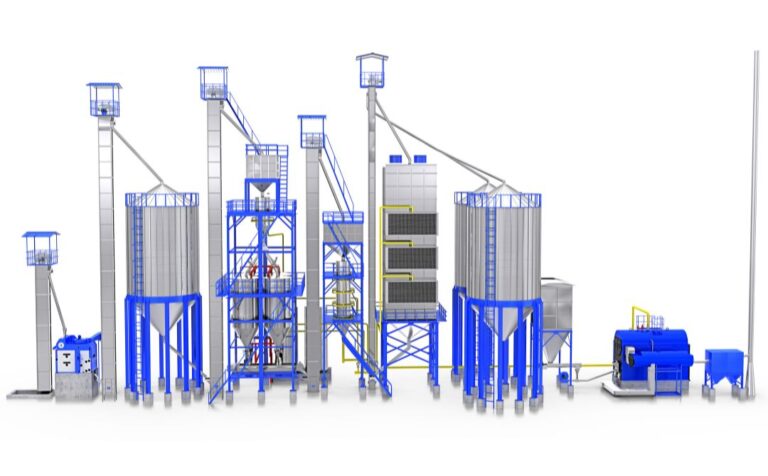Table of Contents
What is paddy
Paddy, also known as paddy seeds, is a raw crop cultivated from the field and consumed globally; furthermore, it is particularly prevalent in Asian countries. In this context, paddy cultivation plays a crucial role in producing high-quality rice to meet the food demands of millions. Consequently, the cultivation process in agricultural regions focuses on improving yield and sustainability. Among major producers, India holds significant importance, as rice is a staple food for a large portion of the population. Additionally, the paddy husk, which makes up around 20% of the total weight, protects the grain from physical damage, pests, and environmental conditions before processing.
Atonomy of raw paddy
A paddy grain contains multiple layers, each of them serving a specific purpose:


- Husk:
The outermost layer of the paddy is the husk, also known as the “hull.” It is tough and inedible. Moreover, composed mostly of cellulosic and fibrous tissue, the husk is covered with very hard, glass-like spines. Its primary function is to protect the inner grain from environmental damage, pests, and disease. Once the hull is removed during the milling process, edible rice is produced.
- Bran Layers:
Bran is the inner layer of the husk. It has a high percentage of oil, protein, vitamins, minerals and fiber. The nutrients of the bran layer can be transmitted to the inner part of the grain during parboiling process, offering more nutritional benefits than polished white rice.
- Endosperm:
The most significant part of the grain is the endosperm, which consists mainly of carbohydrates. It is the primary energy source that forms an edible portion of the rice.
- Germ (Embryo):
The germ is the reproductive part of the grain, which contains fats, proteins, and vitamins. It is responsible for sprouting into a new plant. Moreover, the embryo takes in oxygen and consumes food which comes from the starch in the grain while at the same time releasing moisture and heat. This explains why grain has the tendency to decrease in weight during storage, as a result of the loss in moisture and dry content in the endosperm.
Key Differences Between Paddy And Rice
| Aspect | Paddy | Rice |
|---|---|---|
| Definition | Unprocessed grain harvested from the rice plant, encased in a husk. | Edible grain obtained after milling paddy to remove the husk and often bran. |
| Processing | Raw, unprocessed; consists of husk and bran. | Milled to remove husk (brown rice) or husk and bran (white rice); may be parboiled. |
| Edibility | Inedible due to tough, fibrous husk. | Edible, suitable for cooking or food products. |
| Appearance | Golden-brown, covered in a hard husk. | Varies: brown (bran intact), white (polished), or yellowish (parboiled). |
| Composition | Husk (20–25%), bran, germ, and endosperm. | Endosperm (white rice) or endosperm + bran/germ (brown rice). |
| Use | Stored, processed, or used for seed; not consumed directly. | Cooked for meals, used in products like instant rice or flour. |
| Nutritional Value | Nutrients in bran/germ, but inaccessible until milled. | Brown rice retains nutrients; white rice has less unless parboiled. |
| Storage | Longer shelf life due to protective husk; prone to pests if not dried. | Shorter shelf life, especially brown rice; parboiled rice stores better. |
Types of Paddy Cultivated in India
India grows diverse paddy varieties with thousands of types cultivated nationwide. These varieties differ based on their growing conditions, grain size, aroma, and culinary uses. Let’s look at four common types of paddy varieties cultivated in India.
1. Sella rice:
Sella rice is a variety of Basmati rice, is among the most popular due to its long, slender grains and aromatic quality. Paddy is primarily cultivated in the northern states of India—such as Punjab, Haryana, and Uttar Pradesh—where it thrives in hydrated areas and requires cooler climatic conditions. As a result, rice cultivation in India supports the production of premium varieties like Basmati, which is widely used for dishes such as biryani, pulao, and fried rice.
Main qualities of basmati rice:
- Non-sticky, long-grain rice with a fragrant aroma.
- Retains a high nutritional value after the parboiling process.
- It requires less cooking time and retains flavor well.
2. Parboiled rice:
Boiled rice, also known as fully parboiled rice, undergoes a comprehensive parboiling process. Initially, the paddy is soaked, followed by steaming, then steamed again, and finally dried before milling. This method enhances the rice’s nutritional profile and alters its texture. Consequently, boiled rice is a staple in South Indian cuisine, commonly served with dishes like sambar, rasam , and various curries.
Main qualities of parboiled rice:
- Richer in taste and slightly sticky in texture.
- Durable grains that remain intact even after prolonged cooking.
- It is ideal for regions with heavy rice consumption.
Examples of boiled rice are IR 64 Boiled Rice, Ponni Boiled Rice, and Matta Rice (Kerala Red Rice).
Half-Boiled Rice:
Half-boiled rice is processed like boiled rice but involves a shorter steaming period. They are cultivated in states like Tamil Nadu, Andhra Pradesh, and Karnataka. Known for their softer texture, these grains are perfect for dishes like idli, dosa, and steamed rice.
Main qualities of half-boiled rice:
- It is softer and less firm than fully parboiled rice.
- Suitable for light curries, porridge, and dishes requiring softer grains.
Examples of half-boiled rice are Swarna Half-Boiled Rice and Sona Masoori Half-Boiled Rice.
Steam Rice:
Steam rice is processed by steaming raw paddy without soaking it beforehand. This preserves the rice’s natural aroma, flavor, and texture while enhancing its durability. Steam rice is a versatile category widely consumed across India.
Main qualities of steam rice:
- Retains the original white color of the grain.
- Less sticky and more aromatic than boiled or half-boiled rice.
- Suitable for both daily consumption and premium dishes.
Unpredictable weather disrupts paddy farming, affecting cultivation and reducing yields in many regions. As a result, rice farming in India faces uncertainty.
Conclusion
Paddy farming plays a crucial role in enhancing food security. cultivation practices have evolved over time, sustaining India’s rich agricultural heritage. Rice production in different regions showcases remarkable diversity. Across India, rice remains a staple, carrying deep cultural and nutritional significance, making it an essential part of both agriculture and cuisine.
Learn more on parboiled rice processing and types of paddy dryers in detail.
Get The Best Price Quote on Paddy Parboiling Plant
Click the form button below and submit your details.
Our team will respond you with a price quote.
Frequently asked questions:
-
What are some examples of steamed rice?
Examples of steamed rice include Jeera Samba Rice, Gobindobhog Rice, and Kolam Steam Rice. These varieties are partially cooked through a steaming process before milling, which helps retain more nutrients compared to raw rice. Steamed rice is known for its fluffy texture, distinct aroma, and longer shelf life, making it popular in both household cooking and commercial food preparation.
-
What are the examples of Sella rice?
A few popular examples of Sella rice are Pusa Basmati Sella Rice, Golden Sella Rice, and Sharbati Sella Rice. Sella rice, also known as parboiled basmati rice, undergoes a special parboiling process before milling, which makes the grains stronger and less likely to break. This type of rice cooks into long, non-sticky grains and is widely exported due to its taste, appearance, and higher nutritional value compared to raw rice. Learn more on sella rice processing here.
-
Why is boiled rice popular in South India?
Boiled rice, also known as parboiled rice, is highly popular in South India because of its nutritional benefits and cooking qualities. The parboiling process pushes vitamins and minerals from the husk into the grain, making it richer in nutrients such as iron, calcium, and B vitamins. Its soft and fluffy texture after cooking makes it ideal for South Indian dishes like idlis, dosas, and meals served with curries and sambar. Additionally, it is easier to digest and provides long-lasting energy, which aligns with the dietary habits of the region.
-
What are the nutritional benefits of parboiled rice?
Parboiled rice is considered more nutritious than raw white rice because the parboiling process locks nutrients into the grain. It is a good source of thiamine (Vitamin B1), niacin (Vitamin B3), and dietary fiber, all of which support better metabolism and digestion. Parboiled rice also has a lower glycemic index, making it suitable for people with diabetes as it helps regulate blood sugar levels. Moreover, it retains a firm texture after cooking, which makes it a preferred choice for both domestic and international markets.
Fill out the form to receive a no-obligation price quote
Good reads are meant to be shared










